Search Results for: library
-
Online Library
Use the Resources Type filter on the left to find resources (e.g., tools, fact sheets, reports) developed by SPRC and other suicide prevention organizations and experts. See more...
-
COLORADO: Longmont Library Launches Well-Being Bags to Spark Conversations about Mental Health
Daily Camera News A Colorado library is offering a new resource to help patrons talk about mental health. The Longmont Public Library, in collaboration with the city’s Supporting Action for Mental Health initiative, has developed Well-Being Bags for adults and families to check out in two-week increments. The bags contain books, articles, films, and music with […] See more...
-
National Native American Heritage Month
November is National Native American Heritage Month—a time to honor the richness and diversity of Indigenous cultures and traditions and to acknowledge the significant contributions of Native Americans. It is also a time to raise awareness about the challenges Native communities are facing, such as systemic oppression, and the ways they have used traditional practices, beliefs, and […] See more...
-
Suicide Prevention Resources for Schools
As students and teachers head back to school, help put suicide prevention on the agenda for the new academic year by spreading the word about these resources: See more...
-
Get Involved in Suicide Prevention Month
Suicide Prevention Month is finally here! Throughout September, join us in highlighting the ways that anyone, anywhere can get involved in suicide prevention by sharing our latest Ideas for Action and Director’s Corner. See more...
-
Suicide Prevention Month: Ideas for Action
Want to get involved in Suicide Prevention Month? Check out our updated annual resource for ideas on how! This September, we invite you to take action to prevent suicide in your community. Learn about effective suicide prevention, center lived experience in your prevention efforts, spread the word about the 988 Suicide & Crisis Lifeline, and be there […] See more...
-
Inclusion Is Key to Mental Health

Celebrate mental health awareness and Asian American, Native Hawaiian, and Pacific Islander communities by weaving inclusivity into everything you do. See more...
-
Suicide Prevention Resource Center’s Best Practices Registry

SPRC’s library of suicide prevention programs and interventions that incorporate best practices, national frameworks and culturally relevant approaches. See more...
-
How Districts Can Respond to a Student’s Suicide
Education Week Planning can help schools and districts prepare to respond appropriately to a student suicide. It is critical that schools build this capacity because youth are at increased risk for suicide contagion (i.e., when exposure to suicide or suicidal behavior influences suicidal behavior in others). After a student suicide, experts recommend school staff talk […] See more...
-
Learning From Autistic Lived Experience

By learning about autism and listening to the unique insights of those experiencing it, we can all support autistic people in living their fullest lives. See more...
-
MICHIGAN: Blue-Collar Suicides Focus of State Prevention Effort
Bridge Michigan Michigan is taking steps to address suicide in the construction industry. In 2019, the suicide rate among the state’s construction and extraction workers was four times higher than in the general population. The Michigan Department of Labor and Economic Opportunity (LEO) held its first annual construction and suicide awareness week last September to […] See more...
-
How to Get More Men to Try Therapy
The New York Times Experts are working to tailor mental health supports for men. Compared to women, men are more likely to die by suicide, drug overdose, and alcohol-related causes but are less likely to report receiving mental health treatment. To better understand how to reach men in crisis, suicide prevention experts carried out interviews and […] See more...
-
“I Want to Help My People”: Tribal Nations in Oklahoma Focus on Mental Health Treatment
KOSU Tribal nations in eastern Oklahoma are integrating mental health supports with their criminal justice systems. For example, the Choctaw Nation has trained its tribal police in how to respond to those experiencing a mental health crisis. The Cherokee Nation’s outpatient mental health unit is working closely with Cherokee Nation Marshals to help connect people […] See more...
-
Suicide Prevention Toolkit for Primary Care Practices

Primary care providers have an important role to play in suicide prevention. This toolkit can be used by all primary care providers. It contains tools, information, and resources to implement state-of-the art suicide prevention practices and overcome barriers to treating suicidal patients in the primary care setting. You’ll find assessment guidelines, safety plans, billing tips, […] See more...
-
Responding After a Suicide: Best Practices for Schools
Schools that experience a suicide in their communities are often uncertain about how to respond and can benefit from others with expertise in this area. State and local organizations contacted by schools in crisis can assist by providing information about best practices and practical resources. This webinar presents safe and effective ways in which schools, […] See more...
-
Caring for Adult Patients with Suicide Risk: A Consensus Guide for Emergency Departments

This guide is designed to assist Emergency Department (ED) health care professionals with decisions about the care and discharge of patients with suicide risk. Its main goal is to improve patient outcomes after discharge. The guide helps ED caregivers answer these questions: How can I effectively intervene while this patient is in the ED? Can […] See more...
-
Promoting Connectedness to Prevent Suicide
Evaluations of interventions directed toward preventing suicidal behavior have shown that promoting connectedness is a promising suicide prevention strategy. Connectedness to others, including family members, teachers, coworkers, community organizations, and social institutions, is an important protective factor. Positive relationships can help increase a person’s sense of belonging, foster a sense of personal worth, and provide […] See more...
-
The Patient Safety Screener: A Brief Tool to Detect Suicide Risk
This seven-minute video describes the first part of the Patient Safety Screener, the Patient Safety Screener (PSS-3), a tool for identifying patients in the acute care setting who may be at risk of suicide. The PSS-3 can be administered to all patients who come to the acute care setting, not just those presenting with psychiatric […] See more...
-
Promoting Help-Seeking Among College Students: Strategies for Suicide Prevention
This webinar will focus on one component of a comprehensive, public health approach to suicide prevention and mental health promotion on campuses: increasing student help-seeking. Presenters will share recent research findings and will describe strategies their campuses are employing to increase the likelihood that a student who needs mental health services will seek out and […] See more...
-
988 Suicide & Crisis Lifeline: Implementation Resources

These resources can help state, tribal, and territorial organizations and their partners implement the 988 Suicide & Crisis Lifeline. See more...
-
Crisis Protocols
Download a text version of this module: Crisis Protocols About This Module Crisis protocols specific to suicide death, suicide attempt, and acute distress are essential because they help a college or university respond in an organized, timely, and compassionate way. Clear and consistent protocols that outline what to do and who to contact will also help […] See more...
-
Strategic Communication Workshop Series #2: Knowing your audience and how to reach them

This three-part workshop series will provide you with the knowledge, skills, and tools to enhance your suicide prevention communication efforts. After attending this workshop series, you will be able to: Describe the importance of strategic planning for communication Apply the components of the Framework for Successful Messaging Identify the right message and channel for your audience Identify other program components that should be in […] See more...
-
Strategic Communication Workshop Series #3: Measuring the impact of your communication efforts

This three-part workshop series will provide you with the knowledge, skills, and tools to enhance your suicide prevention communication efforts. After attending this workshop series, you will be able to: Describe the importance of strategic planning for communication Apply the components of the Framework for Successful Messaging Identify the right message and channel for your audience Identify other program components that should be in […] See more...
-
Promoting Connectedness in American Indian and Alaska Native Communities through Culture
The third webinar of the ICRC-S 2018-19 webinar series, Preventing Suicide by Promoting Social Connectedness: Promoting Connectedness in American Indian and Alaska Native Communities through Culture, took place on April 22, 2019. The Qungasvik (kung-az-vik) ‘Toolbox’ is a multilevel strength- based intervention developed by Yup’ik communities to reduce and prevent alcohol use disorder (AUD) and suicide […] See more...
-
University of New Mexico
The University of New Mexico (UNM) proposes a Comprehensive, Coordinated, University-wide Suicide Prevention Project (CCUSPP) with the goal of reducing the number of attempted and completed suicides among the student population, with emphasis on those that are at greater risk including Lesbian, Gay, Bisexual, Transgender and Questioning (LBGTQ) youth. CCUSPP will be led by the […] See more...
-
Saginaw Valley State University
Saginaw Valley State University (SVSU), an institution of higher education, will facilitate a comprehensive approach to prevent suicide among students and enhance services for students with mental and behavioral health problems. SVSU will activate the Active Minds Chapter to increase awareness and decrease mental health stigma and train faculty, staff and students to recognize the […] See more...
-
Adult Justice System
The adult justice system involves incarcerated individuals ages 18 and older (or 16 and older depending on the jurisdiction). The National Center on Institutions and Alternatives, which provides suicide prevention services in these settings, recommends that screening for suicide risk be done on an ongoing basis and that special attention be given during periods of high risk, such as […] See more...
-
Minnesota – Carlton County Public Health and Human Services
NEXT TXT 4 LIFE builds on existing multi-agency collaborations to strengthen suicide prevention efforts which serve 22,000 school-aged youth who live in rural and reservation areas of Northeastern Minnesota. Northeastern Minnesota cover 24% of the State of Minnesota and has 6% of the population. The suicide rate for youth and adults in this area is among […] See more...
-
Indiana – Purdue University
The Indiana Cares Youth Suicide Prevention Project is funded by a 3-year Substance Abuse and Mental Health Services Administration (SAMHSA) grant under the Garrett Lee Smith Youth Suicide Prevention and Early Intervention Program. It is a project of the Indiana University-Purdue University Fort Wayne Behavioral Health and Family Studies Institute. It is a sister project […] See more...
-
Mississippi Band of Choctaw Indians
Youth suicide risk among American Indian/Alaska Native (AI/AN) populations has increased since 2003 and remains highly concentrated among AI/AN youth. The proposed program, the Mississippi Choctaw Youth Resilience Initiative (CYRI-MS), will augment and extend previous suicide prevention efforts implemented by the Mississippi Band of Choctaw Indians (MBCI). The MBCI is a self-governing vibrant Native American […] See more...
-
Guide
State suicide prevention programs play a critical role in providing consultation and training to local health departments and many others at the state and local levels. Recommendations To further strengthen your infrastructure See more...
-
About the Recommendations
Working Definition A state’s concrete, practical foundation or framework that supports suicide prevention-related systems, organizations, and efforts, including the fundamental parts and organization of parts that are necessary for planning, implementation, evaluation, and sustainability. Since its inception in 2002, SPRC has worked with state suicide prevention leaders to help them build a strong prevention infrastructure […] See more...
-
Provide for Immediate and Long-Term Postvention
When a person dies by suicide, many others are deeply affected: What is Postvention? Postvention is a term often used in the suicide prevention field. The definition below is from the U.S. national guidelines developed by the Survivors of Suicide Loss Task Force.1 [Postvention is] an organized response in the aftermath of a suicide to […] See more...
-
Ensure Access to Effective Care and Treatment
Ensuring that effective care for suicide risk is available to individuals at risk for suicide is a key component of suicide prevention. What Works Elements of effective care and treatment for suicide risk include the following: Treatment should focus on suicide risk and underlying mental and/or substance use disorders. Strategies to Consider Take Action See more...
-
Evidence-Based Prevention
Practicing evidence-based prevention means using the best available research and data throughout the process of planning and implementing your suicide prevention efforts. Evidence-based prevention includes: Engaging in Evidence-Based Practice Evidence-based practice has been defined as “the conscientious, explicit, and judicious use of current best evidence in making decisions about the care of communities and populations […] See more...
-
Culturally Competent Approaches
Your suicide prevention efforts will more likely be effective if they are based on the values, needs, and strengths of the groups you are trying to reach. Suicide prevention efforts should be respectful and responsive to groups’ beliefs, practices, and cultural and linguistic needs and preferences. Factors to consider include not only race and ethnicity, […] See more...
-
National Native American Heritage Month
November is National Native American Heritage Month—a time to honor the richness and diversity of tribal cultures and traditions and to acknowledge the significant contributions of Native people. It is also a time to raise awareness about the unique challenges tribal communities have faced, such as an ongoing history of oppression, and the innovative ways they […] See more...
-
Core Competencies
Core Competencies for Suicide Prevention Program Managers SPRC has been providing technical assistance to Garrett Lee Smith (GLS) grantees since 2005. Over the years, we have observed that successful suicide prevention programs often share similar characteristics. The core competencies listed in the model below are based on our experience working with GLS grantees and other […] See more...
-
Organizations
States Suicide prevention efforts can have greater power when they move beyond a single organization to reach a whole community. Visit the States section of our website to find out what’s going on in your state and consider ways to join with partners to have a greater impact. Grantees Garrett Lee Smith Suicide Prevention grantees […] See more...
-
Grantees
Garrett Lee Smith Suicide Prevention grantees are funded by the Substance Abuse and Mental Health Services Administration (SAMHSA) to support suicide prevention work in campus, state, and tribal communities. Learn about Core Competencies for Suicide Prevention Program Managers. National Strategy for Suicide Prevention (NSSP) grantees are funded by SAMHSA to support states in implementing the 2012 National Strategy […] See more...
-
Suicide Prevention Month: Ideas for Action
Looking for ways to observe Suicide Prevention Month? Check out our updated annual resource with ideas to help anyone, anywhere get involved! This September, we invite you to take action to help prevent suicide in your community. Learn about effective suicide prevention, spread the word about the 988 Suicide & Crisis Lifeline, and empower everyone to be […] See more...
-
Joint Statement from the Suicide Prevention Resource Center and National Action Alliance for Suicide Prevention about New Federal Report on Use of Indian Boarding Schools
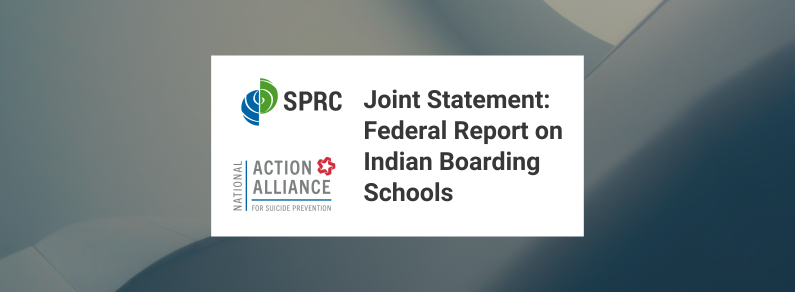
U.S. Secretary of the Interior Deb Haaland and Assistant Secretary for Indian Affairs Bryan Newland recently released volume 1 of the Federal Indian Boarding School Initiative investigative report. Commissioned by Secretary Haaland, the report aims to thoroughly examine the painful history of federal American Indian boarding school policies and establish a foundation for the Interior Department’s ongoing work to […] See more...
-
When a Friend Dies by Suicide: Preventing Suicide Contagion
Answers After a student dies by suicide, parents and school staff can take important steps to reduce suicide risk among their classmates. These include acknowledging the loss but not discussing details of how the person died or what may have caused it, and not suggesting suicide is a solution to problems. To help students heal, […] See more...
-
SPRC Highlights in 2021
SPRC 2021 Webinars New Hampshire’s State Plan Implementation Approach CDC Report Highlights SPRC’s Recommendations for State Suicide Prevention Infrastructure Suicide and Serious Mental Illness: An Overview of Considerations, Assessment, and Safety Planning Suicide Prevention Month: Ideas for Action 2021 State and Territorial Needs Assessment: Call to Action and Summary of Priority Areas See more...
-
The Healing Power of Representation

The Healing Power of Representation In mainstream media, American Indians and Alaska Natives are often portrayed as relics of the past, fairytales, myths, and stereotypes. Native people are seen as barriers to progress, enemies of society, and pagan savages to be civilized. Authentic stories of Native people living, working, and loving in modern times are […] See more...
-
Suicide Prevention Resources for Schools
As students head back to school, help put suicide prevention on the agenda for the new academic year by using and sharing these materials: Suicide prevention resources related to middle school and high school settings Information sheets to help high school teachers and mental health providers prevent suicide Resources for teens who may be at risk for suicide A toolkit to help middle and high schools respond to […] See more...
-
Suicide Prevention Month: Ideas for Action
Looking for ways to observe Suicide Prevention Month? This two-page resource offers information to help anyone, anywhere get involved. In September, we encourage you to take action to help prevent suicide in your community—learn about effective suicide prevention, share stories of hope, and empower everyone to be there for those in distress. See more...
-
PENNSYLVANIA: Free Therapy Program for Black Men Ramps Up Amid Pandemic-Era Stressors
WHYY A Philadelphia nonprofit is providing free therapy to Black men. Initially a campaign to reduce mental health stigma, the program has expanded to help address the pandemic’s disproportionate impact on the Black community. Staffed by licensed counselors and social workers, Black Men Heal offers eight free therapy sessions and then encourages participants to sign up as […] See more...
-
Supporting a Public Health Approach to Suicide Prevention: Recommendations for State Infrastructure
Suicide and Life-Threatening Behavior has published “Supporting a Public Health Approach to Suicide Prevention: Recommendations for State Infrastructure.” In this commentary, experts recommend a framework for organizing emerging evidence on the infrastructure and systems that are needed to support an effective, sustainable, public health approach to suicide prevention. See more...
-
How to Help Someone at Risk of Suicide
NPR A recent survey found most Americans know suicide is preventable and would like to be able to help a person at risk. But it can be hard to know what to do when a loved one is struggling. Experts offer these tips: (1) watch for the warning signs of suicide; (2) if you notice someone is having a […] See more...
-
SPRC Highlights in 2020
In a year of multiple public health challenges, SPRC provided critical support for suicide prevention efforts across the country. We increased our trainings in effective prevention, with more than 44,000 people completing an SPRC online course and 1,200 participating in one of our webinars. We also expanded our efforts to inform and engage the field, reaching more than […] See more...
-
Older Adults Should Pay Close Attention to Mental Health—Especially during Pandemic
Orlando Sentinel Older adults may struggle with their mental health during the COVID-19 pandemic. With decreased social interaction and physical activity, older people may experience declines in their emotional and cognitive well-being. There is a need for more mental health providers who specialize in geriatrics, according to Jim Messina, a Troy University lecturer and Medicare advocate. Getting professional […] See more...
-
Promoting Psychological Health and Suicide Prevention among Older Adults during COVID-19
SPRC is pleased to announce the release of Promoting Psychological Health and Suicide Prevention among Older Adults during COVID-19. This sheet provides information on how the COVID-19 pandemic impacts the psychological health of older adults and strategies for coping, supporting older adults, and seeking professional help. It also covers warning signs and risk factors for suicide, […] See more...
-
When Things Aren’t OK With a Child’s Mental Health
The New York Times As the school year starts, experts encourage parents to pay close attention to their kids’ mental health. Children may experience increased anxiety and depression during the pandemic, and school may bring added stress for some. Experts suggest parents talk with kids about how they are feeling and be mindful of how […] See more...
-
Suicide Prevention in Schools: Strategies for COVID-19

Addressing the mental health needs of students in school communities is more important than ever before. The COVID-19 pandemic has exacerbated the stress and trauma faced by many students while bringing new challenges, such as isolation and increased risk for adversity at home. Schools play a unique and critical role in addressing the pandemic’s potential mental health effects and preventing suicide. While […] See more...
-
Transforming Tribal Communities: Weaving Culture into Suicide Prevention Strategies
SPRC is excited to announce the release of a new video in our series Transforming Tribal Communities: Indigenous Perspectives on Suicide Prevention. In this brief webinar clip, Rob England of the Yurok Tribe and United Indian Health Services, Inc., highlights the merits of weaving culture into evidence-based suicide prevention strategies to engage multiple generations of Native community […] See more...
-
Suicide Prevention Month: Ideas for Action
Looking for ways to observe Suicide Prevention Month? This two-page resource offers information to help anyone, anywhere get involved. In September, we encourage you to take action to help prevent suicide in your community—learn about effective suicide prevention, share stories of hope, and empower everyone to be there for those in distress. See more...
-
For Older People, Despair, as Well as Covid-19, Is Costing Lives
The New York Times Physical isolation during COVID-19 may increase suicide risk among older adults. While those living in residential care facilities have been hit particularly hard by the pandemic, the majority of older adults living at home have also been affected. Isolation and disrupted routine—being cut off from social contact and meaningful activity—can cause […] See more...
-
Treating Suicidal Patients during COVID-19
SPRC is excited to announce the release of Treating Suicidal Patients during COVID-19, a video series with concrete tips on treating patients at risk of suicide during the COVID-19 pandemic. Adapted from an SPRC webinar, the series includes three brief videos on initiating and maintaining remote contact with clients, assessing suicide risk, and developing a safety plan […] See more...
-
Information Sheets on Older Adult Mental Health
SPRC is pleased to announce the release of two new information sheets on older adult mental health: Reducing Loneliness and Social Isolation among Older Adults covers the risk factors for and impact of loneliness and social isolation on older adults, tools to identify loneliness in older adults, and interventions and resources to reduce loneliness and isolation. […] See more...
-
Supporting Survivors of Suicide Loss: A Guide for Funeral Directors, Second Edition
We are pleased to announce the release of the second edition of Supporting Survivors of Suicide Loss: A Guide for Funeral Directors. Developed by EDC and Samaritans, Inc., in consultation with other national experts, this guide provides critical information and practical advice to help funeral directors better serve people who are bereaved by a suicide loss. It includes a new table […] See more...
-
Treating Suicidal Patients during COVID-19

In these short videos, Dr. Barbara Stanley provides concrete tips for making sure clients stay safe without having to rely on hospitalization. See more...
-
Tools to Select, Implement, and Adapt Gatekeeper Trainings
SPRC is pleased to announce the release of a new tool and an updated tool that can be used together to help select, adapt, and implement gatekeeper trainings provided online or in person. The new tool, Selecting and Implementing a Gatekeeper Training, includes questions and lists of factors to consider in selecting, implementing, evaluating, and sustaining gatekeeper […] See more...
-
Choosing a Suicide Prevention Gatekeeper Training Program: A Comparison Table of Trainings Available Online

Find an online training appropriate for your setting, the people you are trying to protect from suicide, and the people you want to train as gatekeepers. See more...
-
Nurses May Need Suicide Prevention Screening
HealthDay According to a recent study, nurses are at increased risk for suicide. Using federal data, researchers compared suicide rates among nurses and the U.S. population between 2005 and 2016. They found that the suicide rate among female and male nurses was significantly higher than in the general female and male population. These findings suggest suicide […] See more...
-
COLORADO: A Construction Company Embraces Frank Talk about Mental Health to Reduce Suicide
NPR A Colorado-based construction company has established a model for preventing suicide among employees. Following the suicide deaths of some of its workers, the RK construction firm set up around-the-clock access to counseling, flexible leave, and crisis response training for managers. The company also changed its culture to foster empathy and promote worker well-being. According […] See more...
-
New York’s Suicide Prevention Academy

In 2014, the New York Office of Mental Health created the New York Suicide Prevention Office (SPO) to coordinate its suicide prevention activities. The SPO receives an allocation in the state’s annual budget. In turn, the SPO uses a portion of its budget to fund the Suicide Prevention Center of New York (SPC-NY) and to help support […] See more...
-
A Look Back at SPRC Highlights in 2019
In 2019, SPRC was grateful to provide critical support for suicide prevention efforts across the country. Throughout the year, we continued to roll out trainings in effective prevention, with more than 30,000 individuals completing an SPRC online course and nearly 1,000 participating in one of our webinars. We also expanded our efforts to inform, engage, and share resources […] See more...
-
New Insight on Suicide Prevention
Rochester Beacon Schoolwide networks of close friends and trusted adults may protect teens from suicide risk, a new study suggests. Researchers surveyed students in 38 high schools and asked them to name peers and adults at their school with whom they had close relationships. They found that rates of suicidal thoughts and suicide attempts were higher in […] See more...
-
NEW YORK: As NYPD Suicides Rise, City to Provide Officers Free Mental Health Care
NBC News New York City police officers will have free access to mental health care, including counseling and medication. To address recent suicide deaths on the force, the city police department and New York-Presbyterian Hospital are collaborating on the program, called Finest Care. According to a recent report by the National Institute of Justice, policing is […] See more...
-
Walking Softly to Heal: The Importance of Community Readiness
Use this resource to measure and assess whether your community is ready to implement prevention programming, including leadership involvement and knowledge of suicide. See more...
-
Suicide Surveillance Strategies for American Indian and Alaska Native Communities
This report summarizes findings and recommendations from SPRC’s exploration of suicide surveillance among American Indian and Alaska Native (AI/AN) communities across the country. If you work in suicide surveillance, we invite you to read the report to learn about the challenges specific to tribal populations and how to address them. Practitioners already working with AI/AN communities can […] See more...
-
Transforming Tribal Communities: Indigenous Perspectives on Suicide Prevention
SPRC is excited to announce the release of a new video series, Transforming Tribal Communities: Indigenous Perspectives on Suicide Prevention. This series includes six- to eight-minute webinar clips with expert advice on addressing the root causes of suicide and mental health issues in American Indian and Alaska Native communities by drawing on community strengths. Presenters show […] See more...
-
Call for Submissions: Public Health Approaches to Suicide Prevention
The American Association of Suicidology (AAS) is accepting submissions for a special issue of Suicide and Life-Threatening Behavior focused on public health approaches to suicide prevention. Submissions are due February 29. See more...
-
Transforming Tribal Communities: Indigenous Perspectives on Suicide Prevention
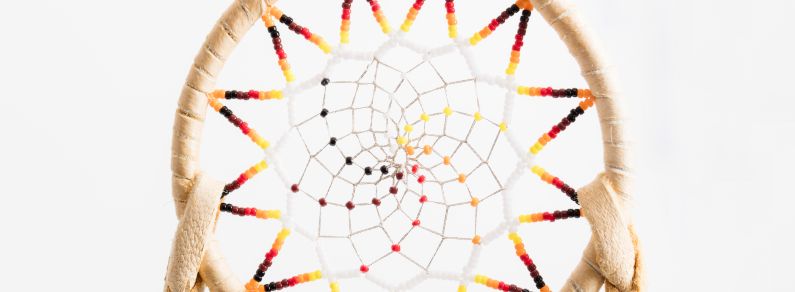
These brief webinar clips feature expert advice on addressing the root causes of suicide and mental health issues in tribal communities. See more...
-
How to Help a Coworker Who May Be at Risk for Suicide
MarketWatch Coworkers can play a key role in workplace suicide prevention. Experts recommend looking for signs of crisis in coworkers, such as feelings of hopelessness or being a burden to others. If you notice significant changes in a coworker’s mood or behavior, ask how they are doing and let them know you care. If they […] See more...
-
NEW JERSEY: New Jersey Launches Nation’s First State Program to Prevent Police Officer Suicide
Philly Voice New Jersey is launching a statewide program to prevent police officer suicide. The first of its kind in the U.S., the program aims to address increased suicide risk among law enforcement officers. It will require all officers to complete a two-day training in suicide prevention and will supplement existing employee assistance and counseling […] See more...
-
INTERNATIONAL: People with Mental Health Disorders Amend the Descriptions
Futurity For the first time, people with lived experience were consulted on the most widely used diagnostic system for mental disorders. Researchers recruited individuals with mental health diagnoses to provide feedback on the upcoming 11th edition of the International Classification of Diseases (ICD-11). Participants reviewed a draft chapter and recommended changes based on their experiences. Study […] See more...
-
Revised Role Sheets for High School Teachers and Mental Health Providers
SPRC is pleased to announce the release of two revised and redesigned information sheets to help high school teachers and mental health providers prevent student suicide: Preventing Suicide: The Role of High School Teachers Preventing Suicide: The Role of High School Mental Health Providers The sheets aim to help these key school personnel understand their role in preventing suicide, […] See more...
-
Suicide Rate for Native American Women Is Up 139%
USA Today New federal data show that the U.S. suicide rate has risen since 1999, with the largest increase among Native American women. Experts suggest that experiences of trauma, poverty, and limited access to mental health care could place American Indians and Alaska Natives (AI/AN) at higher risk for suicide. AI/AN women also experience more violence than […] See more...
-
Striking a Balance: A Comprehensive Approach to Suicide Data
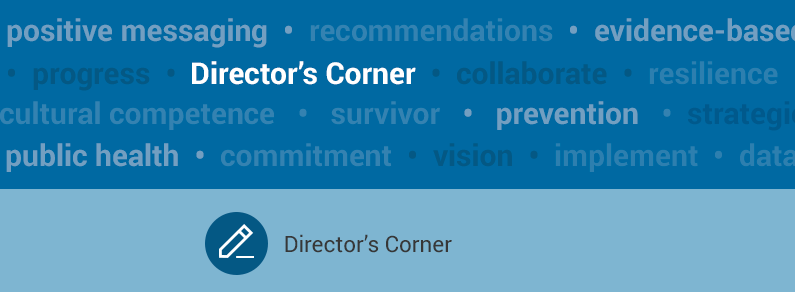
To help inform prevention planning, suicide prevention practitioners have traditionally relied on suicide death data from vital records and CDC’s National Violent Death Reporting System (NVDRS). Data on suicidal ideation and suicide attempts have commonly come from national surveys, like SAMHSA’s National Survey on Drug Use and Health (NSDUH) and CDC’s Youth Risk Behavior Surveillance System (YRBSS). While these […] See more...
-
Prevention in Practice: Integrating Substance Abuse and Suicide Prevention in West Virginia
SPRC is pleased to announce the release of Prevention in Practice: Integrating Substance Abuse and Suicide Prevention in West Virginia. In this four-minute audio story, Barri Faucett of Prevent Suicide WV describes a statewide initiative to integrate West Virginia’s substance abuse and suicide prevention efforts. In partnership with the state bureau for behavioral health, Faucett and her […] See more...
-
The Suicide and Opioid Link: Translating Knowledge into Action

The intersection between suicide and the opioid epidemic was front and center at this year’s American Association of Suicidology (AAS) annual conference, as our field explored the theme of “Converging Fields, Expanding Perspectives.” Presentations ranged from data mapping of suicide and opioid overdose hotspots to better understanding the language and context of the substance abuse prevention and treatment […] See more...
-
PENNSYLVANIA: Yearbook Memorials for Suicide Victims a Delicate Subject in Valley
The Daily Item School districts in Pennsylvania’s Central Susquehanna Valley are grappling with how to safely memorialize students who die by suicide. Some schools include suicide deaths in yearbook memorial pages, while others do not. For example, the Line Mountain School Board policy prohibits memorials for students who die by suicide but allows memorials for […] See more...
-
Prevention in Practice: Care Transitions at New Hampshire Hospital
SPRC is pleased to announce the release of Prevention in Practice: Care Transitions at New Hampshire Hospital. This success story details how the National Alliance on Mental Illness New Hampshire (NAMI NH) and New Hampshire Hospital established a program to help youth inpatients safely transition between the hospital, other health care settings, and their community. Read […] See more...
-
Supporting Survivors of Traumatic Events

A few weeks ago, we witnessed the tragic suicide deaths of several individuals who had been affected by school shootings. The national suicide prevention field was quick to respond with press releases highlighting help and prevention resources, and consultation with national news media to help them shape their coverage of these deaths. In the aftermath of these losses, let’s […] See more...
-
INTERNATIONAL: Why More Men than Women Die by Suicide
BBC Future In many countries around the world, men are more likely to die by suicide than women. Increased suicide risk among men is linked to multiple factors, including gun ownership, substance abuse, and a reluctance to seek help. A number of efforts are working to address that risk. A communications campaign in Australia called […] See more...
-
Suicide Prevention Resources for Schools
SPRC extends its deepest condolences to Marjory Stoneman Douglas High School and the Sandy Hook community in the wake of recent suicide deaths. The following resources can assist schools in their suicide prevention efforts: Suicide prevention resources related to middle school and high school settings Information sheets to help high school teachers and mental health providers prevent suicide Resources for teens who may be at risk for […] See more...
-
Depicting Suicide: Conveying Hope and Recovery in Entertainment

For more than 15 years, SPRC has helped connect prevention practitioners to the latest evidence and tools for safe and effective suicide prevention messaging. We were part of developing the first national recommendations for news media reporting on suicide and continue to help promote them. We also provided key input on the National Action Alliance for Suicide […] See more...
-
About Us: Lived Experience as Lived Expertise

“Lived experience” is an important term in the suicide prevention community. People who have experienced a suicide attempt, suicidal thoughts, or a suicide loss can bring critical insights about prevention. That is why the National Strategy for Suicide Prevention and SPRC’s Effective Suicide Prevention Model emphasize the importance of involving individuals with lived experience in all aspects of our collective prevention […] See more...
-
INTERNATIONAL: What Are Social Media Companies Doing About Suicidal Posts?
The Guardian Social media companies have taken a variety of steps to help address suicide risk among users of their platforms. Twitter, Facebook, and Instagram all have mechanisms for identifying and assisting users who may be at risk. For example, Twitter has a team that reviews self-harm reports and contacts reported users, providing them with […] See more...
-
New SPRC Video Series on Strategic Communication Planning
SPRC is excited to announce the release of a new video series on strategic communication planning for suicide prevention. This series includes five-to-six-minute webinar clips that feature expert advice on developing a communication plan, understanding your audience, and evaluating your efforts. Each video also has a free, downloadable worksheet to help you put these skills into practice! See more...
-
Strategic Communication Planning
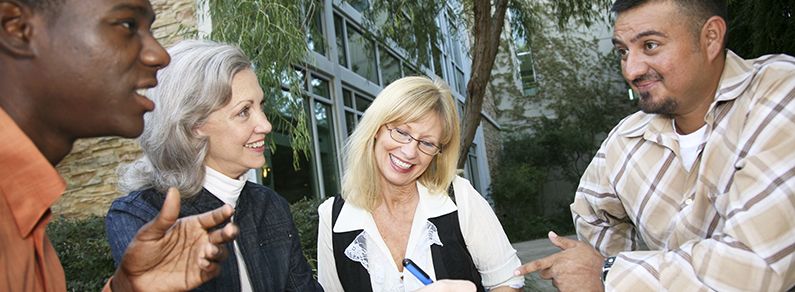
This video series features expert advice on strategic communication planning for suicide prevention, along with free worksheets to help you get started today! See more...
-
Traditional Masculinity Can Hurt Boys, Say New APA Guidelines
The New York Times The American Psychological Association has released its first-ever practice guidelines on boys and men. Designed to help mental health clinicians address the unique needs of male clients, the guidelines say that traditional masculinity can be harmful to men’s health. For example, males who are taught to hide their emotions may be less […] See more...
-
Moving into a New Year

Happy New Year! As 2019 begins, please join us in pausing to reflect on some milestones from the past year in suicide prevention, as well as how we can make the most of the year to come. In 2018, suicide prevention continued to gain momentum as a national priority, with increased public awareness and media […] See more...
-
A Look Back at New SPRC Resources in 2018
Suicide Prevention Toolkit for Primary Care Practices After a Suicide: A Toolkit for Schools, Second Edition Surveillance Success Stories – Centerstone of Tennessee Suicide Surveillance Strategies for American Indian and Alaska Native Communities CALM: Counseling on Access to Lethal Means More SPRC Resources from 2018 See more...
-
Revamped Action Alliance Website
The National Action Alliance for Suicide Prevention (Action Alliance)—the nation’s public-private partnership—has launched a revamped website. We encourage you to check out the following features: About Us – Find out more about the Action Alliance’s story, including who they are, what they aim to do, and how they work. Our Strategy – Read the goals and objectives of the National Strategy for […] See more...
-
New Faith.Hope.Life. Campaign Website Presence
The National Action Alliance for Suicide Prevention (Action Alliance) Faith Communities Task Force has developed a new online presence for its Faith.Hope.Life. campaign. The website offers suicide prevention resources for every faith community—regardless of creed—including: Current information and resources about suicide prevention, including videos, webinars, prayers, and liturgies. Information for faith communities about the Action Alliance’s National Weekend of Prayer for Faith, Hope, […] See more...
-
Honoring Indigenous Voices: Suicide Surveillance from a Tribal Perspective
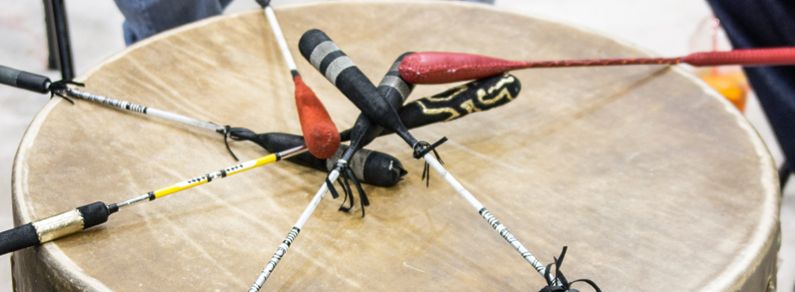
November is National Native American Heritage Month—a time to celebrate the many important contributions of indigenous people, including their distinct history, culture, and traditions. It is also a time to raise awareness about the unique challenges faced by Native communities and to highlight the many innovative strategies they use to address them. In honor of this […] See more...
-
Surveillance Success Stories – Centerstone of Tennessee

SPRC is pleased to announce the release of its latest Surveillance Success Story, which comes from the state of Tennessee. This story details how Centerstone TN, through improved data collection efforts, was able to identify patients at high risk, improve treatment protocols, and reduce suicide deaths within its health care system. The Surveillance Success Story Series describes how […] See more...
-
Surveillance Success Stories – Centerstone of Tennessee

Through improved data collection efforts, Centerstone TN was able to reduce suicide deaths among patients within its health care system. See more...
-
Public Perception Data Released
A new national survey has found that the majority of Americans believe suicide is preventable and would take action to help someone close to them who was thinking about suicide. The online survey was conducted by The Harris Poll in August on behalf of the National Action Alliance for Suicide Prevention (Action Alliance), the public-private partnership working […] See more...
-
Speaking with One Voice for Suicide Prevention

It’s September, and that means we’re all marking Suicide Prevention Day/Week/Month—my 11th annual observance since joining SPRC in September 2007. In that time, I’ve witnessed a profound shift in the national conversation around suicide prevention, which has been shaped by the many different viewpoints of those working in the field. From mental health clinicians to […] See more...
-
After an attempt guides for families, providers and those being treated in EDs

These three booklets provide guidance on what to expect and what to do during emergency department treatment and continuing care after a suicide attempt. See more...
-
SAMHSA Fact Sheets
The Substance Abuse and Mental Health Services Administration (SAMHSA) has released two-page fact sheets on suicide prevention and addressing the challenges of opioid abuse and serious mental illness. They provide information on these issues and the resources, priorities, and key activities SAMHSA is using to address them. See more...
-
Choosing a Suicide Prevention Gatekeeper Training Program: A Comparison Table

This comparison table will help you find a gatekeeper training appropriate for your setting. It is not comprehensive but includes trainings from the Resources and Programs section of the SPRC website. See more...
-
MICHIGAN: Inside West Bloomfield School’s Attempt to Combat Suicide, Help Students Cope
Detroit Free Press After several student suicide deaths, West Bloomfield High School decided to take a different approach to helping students. Part of that approach was implementing a new curriculum designed for their school, called Prepare U. Described as an “experiential mental health” program, it teaches students about mental health issues and provides them with […] See more...
-
Recommended Standard Care for People with Suicide Risk: A Critical Step Forward
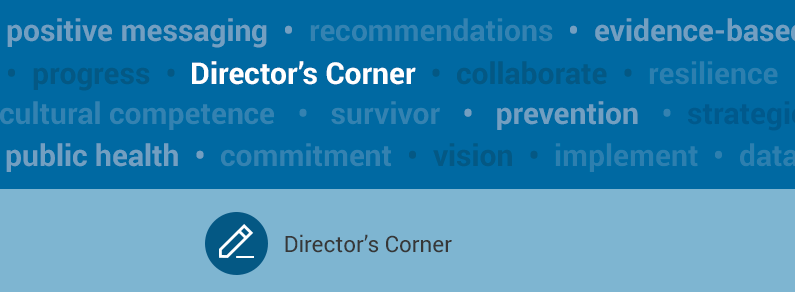
People who are in distress or experiencing a suicidal crisis should be able to walk into any health care setting and receive the care they need. While we can all support this statement in theory, it is not always the case in practice. Many individuals at risk of suicide who have contact with the health […] See more...
-
After a Suicide: A Toolkit for Schools, Second Edition
SPRC is pleased to announce the release of the second edition of After a Suicide: A Toolkit for Schools. Developed in collaboration with the American Foundation for Suicide Prevention (AFSP) and in consultation with other national experts, this toolkit assists schools in implementing a coordinated response to the suicide death of a student. It includes new […] See more...
-
Getting Comprehensive in Our Suicide Prevention Efforts

In my work with states, tribes, campuses, and institutions around the country, I’m often asked, “What program should I use to prevent suicide in my community?” Perhaps to the person’s frustration, my answer is usually, “It’s not that simple.” True, it’s good to know which programs have more evidence of effectiveness, but no one program […] See more...
-
Suicidal Ideation and Suicide Attempts among Court-Involved, Non-Incarcerated Youth
A recent study found that 14 percent of court-involved, non-incarcerated (CINI) youth have a lifetime history of suicidal ideation and/or suicide attempts. These youth are more likely to have a history of prior criminal offenses, marijuana and/or alcohol use, and sexual abuse than CINI youth without a history of suicidal ideation and/or suicide attempts. The […] See more...
-
CALIFORNIA: The Unexpected Role Librarians Are Playing in Sacramento’s Homeless Crisis
The Sacramento Bee The Sacramento Public Library is training its employees in Mental Health First Aid. Funded by the California State Library, the training aims to help librarians and other staff better address the needs of homeless visitors, many of whom struggle with mental health issues. Trainees are learning how to recognize and respond to […] See more...
-
Rocky Mountain Short Takes on Suicide Prevention: The Zero Suicide Trilogy
SPRC has produced a new set of videos featuring interviews with Zero Suicide leaders. These interviews were conducted by the U.S. Department of Veterans Affairs (VA) Rocky Mountain MIRECC for Veteran Suicide Prevention for its podcast series, and shared with their permission. They include (1) “An Introduction to the Zero Suicide Initiative” with Julie Goldstein Grumet, director of Health […] See more...
-
A Look Back at New SPRC Resources in 2017
Surveillance Success Stories – Montana Creating Linguistically and Culturally Competent Suicide Prevention Materials Effective Suicide Prevention Video How Emergency Departments Can Help Prevent Suicide among At-Risk Patients: Five Brief Interventions Virtual Learning Lab: State Suicide Prevention Surveillance Success Stories – California Department of Corrections and Rehabilitation More SPRC Resources from 2017 See more...
-
After an attempt: A guide for medical providers in the emergency department taking care of suicide attempt survivors

This brochure provides tips for emergency department providers to enhance care for individuals who have attempted suicide. See more...
-
Start with What You Know: Using Data for Suicide Prevention

As we approach the 18th anniversary of the first National Strategy for Suicide Prevention, that document’s strategic direction on data and surveillance is moving to center stage in our field. From the new national goal of a 20 percent reduction in the suicide rate by 2025, to state and community efforts to make an impact, we […] See more...
-
National Suicide Prevention Lifeline 2017 State Reports
The National Suicide Prevention Lifeline (Lifeline) has released its 2017 National Association of State Mental Health Program Directors (NASMHPD) commissioner reports. These reports include data on calls to Lifeline crisis centers in U.S. states and territories from January to June 2017, five-year call volume trends, and the proportion of calls received by in-state crisis centers. See more...
-
Surveillance success stories – California Department of Corrections and Rehabilitation

This story details how the California Department of Corrections and Rehabilitation (CDCR) improved its systemwide surveillance of suicide deaths and self-harm. See more...
-
ILLINOIS: Metra Safety Official Talks Suicide Prevention at McHenry County Mental Health Conference
Northwest Herald Transportation agency Metra is expanding efforts to prevent suicide on its Chicago area commuter rail system. In collaboration with the McHenry County Mental Health Board and local mental health organizations, Metra is launching a new suicide prevention campaign. The agency is rolling out training to transportation agents in the Question, Persuade, and Refer […] See more...
-
HHS Awards $14.5 Million in Grants for Suicide Prevention Programs
The Department of Health and Human Services’ (HHS) Substance Abuse and Mental Health Services Administration (SAMHSA) has announced the funding of up to $14.5 million in grants for suicide prevention programs. The grant programs included in this SAMHSA effort are cooperative agreements to implement Zero Suicide and the National Strategy for Suicide Prevention. See more...
-
Faith, Hope, & Life

September is the month when those of us who work in suicide prevention make a special effort to reach out and remind the public of the toll that suicide takes on our families, communities, nation, and world. This year, the second weekend in September (September 8-10) has been designated a National Day of Prayer for Faith, […] See more...
-
How Emergency Departments Can Help Prevent Suicide among At-Risk Patients: Five Brief Interventions
The Suicide Prevention Resource Center (SPRC) is pleased to announce the release of its new video, How Emergency Departments Can Help Prevent Suicide among At-Risk Patients: Five Brief Interventions. This nine-minute, virtual presentation describes the unique role that emergency department (ED) professionals can play in preventing suicide by providing five brief interventions prior to discharge. It […] See more...
-
Get Ready for School

August is a time when many people head to the beach or mountains to take a well-deserved break from their jobs, find relief from the heat, and spend time with friends and family. But for school teachers and administrators, August is spent writing lesson plans and attending to the many things that need to be […] See more...
-
A Note from Jerry Reed, Director, SPRC
I am excited to inform you about an upcoming change in my work at Education Development Center (EDC). As many of you know, I have had the pleasure of serving as director of the Suicide Prevention Resource Center (SPRC) since July 2008. I am extremely proud of the progress that SAMHSA-funded SPRC and its staff—past and […] See more...
-
ALASKA: School District Expands Crisis Response Team
Alaska Star In an effort to address high rates of youth suicide, the Anchorage school district is expanding its crisis response team. Made up of more than a dozen staff members, the team helps schools respond to traumatic events in their communities. Their crisis response protocol is based on the PREPaRE model, which was developed […] See more...
-
Suicide prevention resources for adult corrections
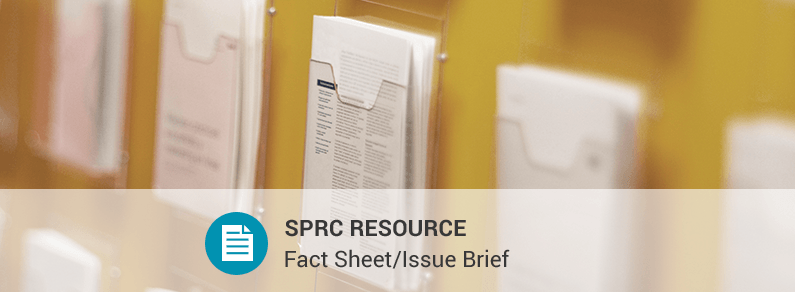
This sheet lists written materials, trainings, organizations, and websites that contain information on suicide prevention in adult correctional facilities. It can be used with the Suicide Prevention Resource Center’s information sheet The Role of Adult Correctional Officers in Preventing Suicide or on its own by correctional officers, administrators, and health/mental health care providers in adult […] See more...
-
PENNSYLVANIA: Student Suicides: How Does the City Respond?
The Notebook Philadelphia health officials are working with the city’s school district to prevent student suicide. The Department of Behavioral Health and Intellectual disAbility Services (DBHIDS) often provides supplemental clinical support to the school district following a student suicide death. According to Kamilah Jackson, psychiatrist and deputy chief medical officer for DBHIDS Child and Adolescent […] See more...
-
Sustaining Success

Suicide Prevention Resource Center (SPRC) staff have had the privilege of working with Garrett Lee Smith Memorial Act (GLS) grantees for the past 12 years. We have watched them grow in number, sophistication, and experience. During this same period, however, we have also watched suicide rates rise, both for adolescents and adults. We know that there are […] See more...
-
Suicides Prompt Medical Schools to Finally Address Student Mental Health
KQED Medical schools and residency programs across the country are increasing efforts to prevent suicide and promote mental health among students and residents. These include wellness and stress reduction programs, mental health screenings, and support services. The University of Southern California (USC) Keck School of Medicine requires all of its students to undergo “Keck Check” […] See more...
-
Mental Health Environment of Care Checklist
A 2012 study revealed that implementation of the Mental Health Environment of Care Checklist (MHEOCC) reduced the suicide rate in Department of Veterans Affairs (VA) hospital acute inpatient mental health units. The MHEOCC focuses on identifying and correcting environmental risks for suicide and suicide attempts, such as anchor points that could be used for hanging. […] See more...
-
Lethal Means Counseling by Physicians
An American Journal of Medicine commentary proposed that suicide in the United States could be reduced if physicians counseled at-risk individuals and their families to temporarily store firearms so that they cannot be used for self-harm. The authors suggested that health and behavioral health care providers could provide information about the methods and benefits of temporarily storing […] See more...
-
MONTANA: Anti-Suicide Bill’s Passage Has Personal Meaning for Sponsor
Independent Record A new suicide prevention bill has been signed into law by the Montana governor. The bill allocates $1 million for suicide prevention efforts across the state, including funding for activities that target Native youth, grants to schools, and ongoing financial support for community-based organizations, such as veterans groups. According to the requirements of […] See more...
-
Learning from California

This month, I am proud to announce the publication of Creating Linguistically and Culturally Competent Suicide Prevention Materials. This new SPRC resource is based on the experiences of the California Mental Health Services Authority (CalMHSA) adapting their Know the Signs (KTS) campaign for linguistic and cultural groups that were not being reached by their English- and […] See more...
-
Drug and Alcohol Problems Linked to Increased Veteran Suicide Risk, Especially in Women
ScienceDaily A recent study found that substance use disorders may place veterans at increased risk for suicide, particularly among women. Researchers at the University of Michigan (U-M) and U.S. Department of Veterans Affairs (VA) examined data from nearly 5 million veterans, which showed that those with substance use disorder diagnoses had more than double the […] See more...
-
Surveillance Success Stories – Texas: Denton and Tarrant Counties

SPRC is pleased to announce the release of its latest Surveillance Success Story, which comes from the state of Texas. This story details how Denton and Tarrant Counties access and analyze data on suicide deaths and use that data to strengthen their prevention efforts. The Surveillance Success Story Series describes how states, tribes, and health systems […] See more...
-
Creating Linguistically and Culturally Competent Suicide Prevention Materials
SPRC is pleased to announce the release of its new guide, Creating Linguistically and Culturally Competent Suicide Prevention Materials. Developed in collaboration with the California Mental Health Services Authority (CalMHSA), this guide was designed to help public health practitioners produce suicide prevention materials for specific linguistic and cultural communities. The process described in this guide is […] See more...
-
Changing the Story
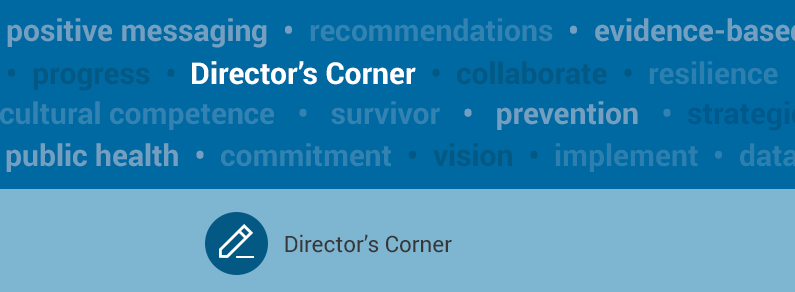
I’m a commuter. Twenty-five miles and approximately an hour (two or three when it snows) one way every day for 15 years. I’ve never counted, but I make my way through at least 30 traffic lights on one of the busiest roads in Colorado. It’s cool—I’m used to it and it gives me time to […] See more...
-
Crisis Center Collaboration with Emergency Departments to Prevent Suicide
SPRC Senior Project Associate Adam Chu has published a post on the National Suicide Prevention Lifeline Network of Crisis Centers blog. The post describes how crisis centers can collaborate with emergency departments (EDs) to prevent suicide, and details recent milestones that reflect increasing efforts to do so. It also includes a list of related resources, including SPRC’s consensus guide on […] See more...
-
Can Facebook’s Machine-Learning Algorithms Accurately Predict Suicide?
Scientific American Facebook has just expanded the array of tools it provides to reach users at risk for suicide and connect them with mental health resources. The menu of options that allows Facebook users to report posts with content indicating potential thoughts of suicide or self-harm will now be available for Facebook live streams as […] See more...
-
One Issue, One Goal

In January, the National Action Alliance for Suicide Prevention (Action Alliance) announced that it will join with others to reduce the annual suicide rate 20 percent by 2025—a goal originally set by the American Foundation for Suicide Prevention (AFSP). Unifying around this goal represents a pivotal point in the history of suicide prevention. I am confident that […] See more...
-
Surveillance success stories – Montana

The passage of the Montana Suicide Mortality Review Team Act in 2013 marked the beginning of a coordinated effort to use surveillance data to reduce the state’s suicide rate. The Suicide Mortality Review Team accesses and analyzes data from death certificates, coroner and medical examiner reports, and health and behavioral health care records for every […] See more...
-
Transforming communities: Key elements for the implementation of comprehensive community-based suicide prevention

Developed by the Action Alliance, this resource presents seven key elements that should guide program planning and implementation. It is being jointly released with the CDC’s Preventing Suicide: A Technical Package of Policy, Programs, and Practices which outlines specific, evidence-based suicide prevention strategies for communities to consider as part of their comprehensive approach. See more...
-
Surveillance success stories – Texas: Denton and Tarrant Counties

This story details how Denton and Tarrant Counties in Texas created strong and timely data snapshots for their Zero Suicide-specific and broader county suicide prevention efforts. See more...
-
A Look Back at New SPRC Resources in 2016
Safe Reporting on Suicide SPARK Talk, March 11 Common Ground: Reducing Gun Access SPARK Talk, March 11 Preventing Suicide in Emergency Department Patients Online Course, September 23 Reaching Older Adults SPARK Talk, September 30 Men in the Middle Years SPARK Talk, September 30 Preventing Suicide among Men in the Middle Years: Recommendations for Suicide Prevention […] See more...
-
Physician and Medical Student Depression and Suicide Prevention
The Accreditation Council for Graduate Medical Education (ACGME), American Foundation for Suicide Prevention (AFSP), and Mayo Clinic have launched an initiative to prevent physician and medical trainee suicide. They have introduced a library of educational resources for physicians and medical trainees, which includes a four-minute video that advises medical students, residents, and fellows on peer support and help-seeking, and a guide to help graduate training […] See more...
-
Preventing Suicide among Men in the Middle Years
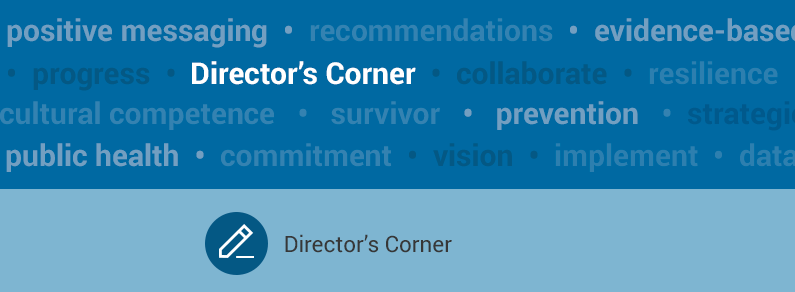
In gatekeeper training, we learn to ask a hard question: Have you been thinking about suicide? I would like to invite you to ask another hard question: What about men in the middle years? I had not thought much about this population when I began working as a psychiatrist. Gradually, I realized that many […] See more...
-
Surveillance Success Stories – Fort Peck Indian Reservation

Following a suicide cluster in 2010, tribal leaders on the Fort Peck Indian Reservation in Montana began collecting data to establish a baseline understanding of suicidal behavior on the reservation so they could allocate resources and focus their suicide prevention efforts most effectively, as well as monitor cases over time to see if those efforts […] See more...
-
INTERNATIONAL: Alcohol Policies Contribute to Suicide Prevention, Review Shows
Medical Xpress According to an international review, policies intended to restrict the use of alcohol may reduce the risk of suicide in a population. While the relationship between alcohol consumption and suicide rates has been established by a body of research, fewer studies have investigated the impact of alcohol policies on suicide risk. Examining 17 […] See more...
-
Surveillance success stories – Fort Peck Indian Reservation

Following a suicide cluster, tribal leaders began collecting data that would help them better understand and prevent suicidal behavior on the reservation. See more...
-
The New SPRC.org

The Suicide Prevention Resource Center (SPRC) is proud to announce the launch of its new website, which was designed to reflect the enormous progress made in the science and practice of suicide prevention since SPRC first went online in 2002. In the last 14 years, we have increased our understanding of why people die by […] See more...
-
Surveillance Success Stories – White Mountain Apache Tribe

The White Mountain Apache Tribe requires community members, first responders, and medical, school, and social service personnel to report suicidal behaviors, non-suicidal self-injury, and binge alcohol and drug use to the tribe’s Celebrating Life project. This program conducts in-person follow-up visits on every report. The data is also included in a secure database that provides […] See more...
-
Tough Economy, Alcohol Fuel Suicide Risk in Men: Study
UPI Heavy alcohol use may increase suicide risk among men during economic downturns, according to a new study. Previous research has shown an association between increased risk for suicide and recessions. This study looked at how alcohol plays a part in that association through analyzing data from 16 states and comparing use of alcohol in […] See more...
-
Prevention-Oriented Suicide Risk Assessment: Planning Not Prediction

Most clinicians-in-training learn to summarize suicide risk in a categorical probability judgment expressed as low, moderate, or high, often with gradations like low-moderate. But what do we really mean when we say a patient is at “low” “moderate” or “high” risk? Risk compared to whom? Compared to when? In what setting? These labels are devoid […] See more...
-
MASSACHUSETTS: Simmons College Course Prepares Future Social Workers to Address Suicide
WBUR Simmons College started offering a course on suicide prevention in its master’s in social work (MSW) program last spring. Developed by two of the school’s professors, “Understanding Suicide: Prevention, Intervention, and Postvention” is the first course on suicide prevention for social work students at a Massachusetts college. Only a few other colleges and universities […] See more...
-
CALIFORNIA: UC Steps Up Efforts to Address Student Mental Health
UC steps up efforts to address student mental health University of California At the University of California (UC) campuses, as at other campuses across the U.S., students are reporting increasing levels of distress and the demand for mental health services is growing. The University of California is addressing this problem in part by hiring 85 […] See more...
-
The Cost of Suicidal Behavior
A recent analysis reported that the cost of suicides and suicide attempts in the United States in 2013 was $93.5 billion. More than 97 percent of this cost was in lost productivity. This cost estimate is higher than that from other sources because it is based on estimates of the actual, rather than the reported, […] See more...
-
Making Educators Partners in Youth Suicide Prevention: ACT on FACTS

This two-hour online training helps educators and school staff understand their role in suicide prevention and covers strategies for school suicide prevention. See more...
-
Surveillance Success Stories – Kentucky

Inspired by National Action Alliance for Suicide Prevention’s Suicide Care in Systems Framework the KY Garrett Lee Smith (GLS) program and Department for Behavioral Health, Development, and Intellectual Disabilities (DBHDID) looked at data as a first step in enhancing the ability of Kentucky’s state psychiatric hospitals and community mental health centers (CMHCs) to prevent suicide. […] See more...
-
Surveillance Success Stories – Vermont

An analysis of data from Vermont’s Department of Mental Health Management Information System and the state Vital Records Office revealed that only 21 of the 103 residents who died by suicide in 2013 received services from a public mental health agency. This demonstrated the importance of accessing data from private behavioral health care providers and […] See more...
-
Surveillance Success Stories – Ohio

A crosswalk of data from death certificates and records from state hospitals and mental health clinics revealed that more than 67 percent of people who died by suicide in Ohio had visited a public behavioral health provider in the year before their death. Twenty-nine percent had done so in the month before their suicide. You […] See more...
-
Surveillance success stories – White Mountain Apache Tribe (WMAT)

Through tribally-mandated data collection, the WMAT was able to identify those under 25 as most at risk and plan targeted interventions. See more...
-
Connecticut Clearinghouse
A statewide library and resource center for information on substance use and mental health disorders, prevention and health promotion, treatment and recovery, wellness and other related topics. Has a searchable database of treatment facilities and helplines in Connecticut. See more...
-
Community Gatekeeper Training: Lesbian, Gay, Bisexual, Transgender (LGBT) Older Adults & Suicide Prevention added to Section III of the Best Practices Registry
This 120-minute program is designed by Crisis Support Services of Alameda County to train gatekeepers to recognize when an older LGBT adult may be at risk for suicide and respond appropriately. Topics addressed in the program include unique challenges faced by LGBT older adults, risk and protective factors, suicide warning signs, risk assessment, and safety planning. See more...
-
No longer wanting to die
The New York Times Will Lippincott, a publishing professional, describes his experience of having been suicidal and of finding an effective set of tools for recovery in dialectical behavior therapy (DBT). As a middle-aged white man, Mr. Lippincott is a member of a demographic group with a relatively high suicide rate in the United States, […] See more...
-
How schools cope after a tragedy like suicide
US News & World Report In the aftermath of a student’s death by suicide, staff and other students face several challenges at once: they must cope with their own emotions, answer questions from parents and the media, and try to minimize the risk that other children will be emotionally triggered to attempt suicide themselves. Postvention […] See more...
-
Toward Zero Suicide: The Essential Role of Data

Zero Suicide is a systematic approach to preventing suicide in health care and behavioral health settings. The Zero Suicide approach is based on a commitment to patient safety and a belief, informed by data, that health and behavioral health care systems can prevent suicides among the people in their care. Because of the risks faced […] See more...
-
Inside the quest to prevent suicides through better data
FCW: The Business of Federal Technology Together, the Department of Defense (DoD) and the Department of Veterans Affairs (VA) are making progress toward the creation of a powerful new joint data system that they hope will strengthen suicide prevention efforts. Still in its early stages, the Suicide Data Repository has not yet integrated records from […] See more...
-
AUSTRALIA & THE UNITED KINGDOM: Portraying suicide: Research on UK arts coverage and shifts in stage and screen practice in Australia
Crikey Like Australia, the UK has established guidelines for journalists to help them cover suicide responsibly. However, researchers from University College London recently reported that in many instances, these recommendations are not followed. They focused particularly on reviews of art exhibitions featuring the work of artists who had died by suicide, and found that many […] See more...
-
When teens talk of suicide: What you need to know
WBUR It can be difficult for parents to differentiate between teenagers’ normal expressions of negative feelings, and signs of suicidal risk. Gene Beresin and Steve Schlozman, child and adolescent psychiatrists at Massachusetts General Hospital, explain that alarming comments and behavior don’t always indicate imminent danger: “Sometimes kids say something. Sometimes they post a frightening array […] See more...
-
Surveillance success stories – Vermont

An analysis of data from the state behavioral health and vital statistics systems revealed gaps in that state’s ability to collect suicide data. See more...
-
Surveillance success stories – Ohio

Data from death certificates and public clinics and hospitals helped Ohio understand the patterns of service by people who died by suicide. See more...
-
Occupations and Suicide Risk

A meta-analysis of 34 studies found that people in occupations requiring a lower level of skill are more at risk of suicide than people in jobs requiring a higher level of skill. People in the lowest occupational skill categories (such as hotel and office cleaners, sanitation workers, food preparation assistants, and unskilled laborers in mining, […] See more...
-
War’s elite tough guys, hesitant to seek healing
The New York Times In response to a sharp rise in the suicide rate among soldiers in the armed services’ Special Operations units, the government is directing resources toward efforts to understand the problem and reverse the trend. Research increasingly suggests a connection between traumatic brain injuries (TBI) and posttraumatic stress disorder (PTSD) and subsequent […] See more...
-
Preventing law enforcement officer suicide
The Community Policing Dispatch A report just released by the International Association of Chiefs of Police (IACP) examines the mental health risks faced by police officers and lays out a prevention strategy. More police officers die by suicide annually than are killed in the line of duty. In addition to risk factors that affect other […] See more...
-
Newspaper coverage linked with youth suicide clusters
USA Today A new study has focosed on the role of newspaper coverage as a risk factor in the phenomenon of youth suicide “clusters,” i.e., when a young person’s suicide death is closely followed by several more in the same community. Researchers paired similar communities in which a youth suicide had occurred, and found that […] See more...
-
Moving Forward with Attempt Survivors
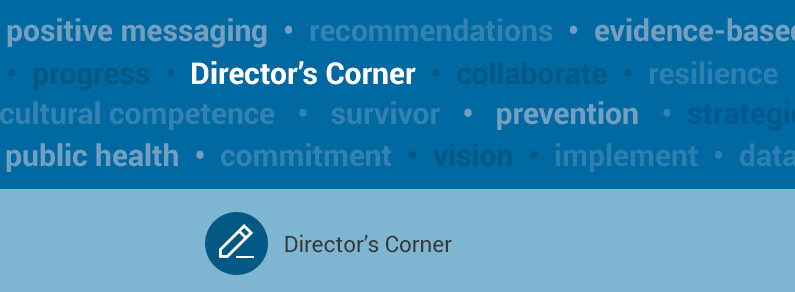
The suicide attempt survivor movement had its origins in courageous acts of self-disclosure by a small number of pioneers who worked to shed the oppressive weight of stigma, shame, and silence. By writing, speaking, and networking, they helped attempt survivors get a seat at the suicide prevention table. Early progress was heralded by events like […] See more...
-
New program offers intervention after suicide
The Times Union Several community groups, guided by New York’s Rensselaer County Suicide Prevention Task Force, have come together to form a county-wide suicide postvention team. The team includes educators, first responders, mental health providers, clergy, and funeral directors, and will be on call to provide a coordinated response after a suicide. Rachel Handler, co-chair […] See more...
-
Referenced version – The role of adult correctional officers in preventing suicide
This document provides references for The Role of Adult Correctional Officers in Preventing Suicide and is intended to be used only as supplementary information. See more...
-
The role of adult correctional officers in preventing suicide
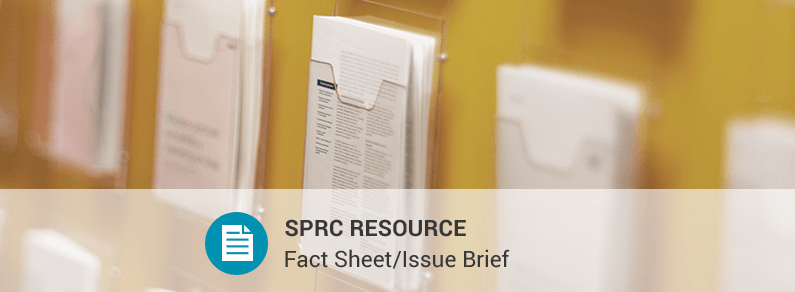
This brief sheet provides basic information to help correctional officers in facilities for adults to recognize and respond to people who may be suicidal or at high risk. (An unformatted version of the sheet that includes references is available.) An accompanying list of resources is also available. See more...
-
Media Guidelines and People Bereaved by Suicide
A study from the UK revealed some tension and a difference in emphasis between the concerns of people bereaved by suicide loss (notably that the deaths be reported accurately and sympathetically) and the typical focus of guidelines for reporting on suicide (which are focused on preventing “copycat” suicides). This study compared the recommendations and concerns […] See more...
-
Suicide Screening in Emergency Departments
A pilot project on suicide screening found that a substantial proportion of people treated for medical issues in emergency departments (EDs) screened positive for risk factors for suicide. More than a third of the patients screened positive for depression. Seven and a half percent screened positive for suicidal ideation. Almost 13 percent reported that they […] See more...
-
Bullying and Other Risk Factors for Suicidal Behavior
The results of a study of middle-school students (ages 10-13) confirmed that “involvement in bullying in any capacity is linked to increased risk for suicidal ideations and behavior” – especially for children who both bully others and are victims of bullying. However, when the analysis controlled for delinquency and depression, most of this increased risk […] See more...
-
A Text-Based Crisis Service for Youth
A text-based crisis service for adolescents increased help-seeking behaviors among adolescents, according to the authors of an article describing a pilot project (TextToday) in northern Nevada. The pilot resulted in substantial monthly increases over the previous five-year period when only voice communication was available. The volume increased most in schools in which there was a […] See more...
-
Evaluating Suicide Prevention Programs
A team of nationally recognized experts in suicide prevention reviewed research and evaluation studies on 16 youth suicide prevention programs. The team adapted a methodology described in the Guide to Community Preventive Services, “one of the most rigorous methods of systematic reviews,” to identify studies to include in their review; assess the effectiveness of the programs […] See more...
-
Voices That Inspire

This month I would like to look back on the important role that survivors of suicide loss have played in the history of suicide prevention. In the late 1990s, I worked for Senator Harry Reid. While helping him prepare for a hearing on mental health and the elderly, I discovered that Senator Reid’s home state […] See more...
-
Risk and Protective Factors in Racial/Ethnic Populations in the U.S.
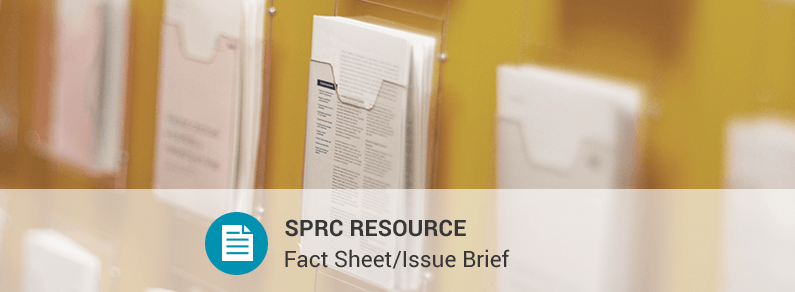
Risk and Protective Factors in Racial/Ethnic Populations in the U.S. See more...
-
Trauma-informed approaches: Federal activities and initiatives
This report documents the projects, programs, and initiatives of more than three dozen federal agencies, departments, and offices. With agencies’ commitment to implementing gender-responsive, trauma-informed approaches, it addresses the growing national interest in this issue, the work of the Federal Partners Committee, and the specific progress that participating agencies have made over the past three […] See more...
-
Suicide Prevention Resource Center Celebrates Tenth Anniversary

Ten years ago, in October 2002, the national Suicide Prevention Resource Center (SPRC) was established with funding from SAMHSA. Its mission when originally appropriated by Congress was to: provide technical assistance in developing, implementing and evaluating effective suicide prevention programs provide training and field support serve as a clearinghouse for all pertinent best practices information regarding suicide prevention promote evaluation of suicide prevention […] See more...
-
Suicide Prevention as a Social Movement
The authors of a recent article argue that suicide prevention practitioners, researchers, and advocates can have a greater impact if they understand the role of suicide prevention as a “social movement” – “an organized activity that encourages or discourages social change.” They also argue that a key step in the development of a social movement […] See more...
-
Altitude and Suicide
An analysis of National Violent Death Reporting System (NVDRS) data revealed that suicide rates are higher among people who live at high altitudes than those living at lower elevations. This confirms previous research on the subject. However, the authors of this study suggest that the differences in suicide rates may be a result of the […] See more...
-
Model Adolescent Suicide Prevention Program (MASPP)
This comprehensive prevention and intervention program was developed to address high rates of suicide among adolescents and young adults in a small rural American Indian tribe. See more...
-
What are you doing for Suicide Prevention Week and World Suicide Prevention Day?

The week of September 4-10, 2011 is designated as Suicide Prevention Week in the United States. On September 10, 2011, World Suicide Prevention Day will be acknowledged globally. This week provides us opportunities to engage many who might not otherwise be aware of the magnitude of suicide. In the United States, over 34,000 people die […] See more...
-
LOOK LISTEN LINK: A Health Curriculum for Middle School
Developed in Washington State, LOOK LISTEN LINK is a curriculum designed for middle school-aged youth. It consists of four 45-minute lessons that focus on identifying causes of stress along with healthy ways of coping with stress and anxiety. Another significant focus of the program is teaching youth how to recognize friends who are depressed and […] See more...
-
CALM: Counseling on Access to Lethal Means
Developed by Elaine Frank and Mark Ciocca, CALM: Counseling on Access to Lethal Means is a 1.5 to 2 hour workshop designed to help providers implement counseling strategies to help clients at risk for suicide and their families reduce access to lethal means, particularly (but not exclusively) firearms. It includes a number of components: background […] See more...
-
Helping Every Living Person (HELP) Depression and Suicide Prevention Curriculum
Developed by Washington State, the Helping Every Living Person: Depression and Suicide Prevention Curriculum (HELP) educates students about depression and suicide prevention. HELP consists of four 45-minute lesson plans on the following topics: Stress and depression. Risk factors and warning signs of suicidal behavior. Suicide intervention skills. Practice of intervention skills and problem-solving skills (for […] See more...
-
Consensus statement on suicide and suicide prevention from an interfaith dialogue
This statement was developed at the Interfaith Suicide Prevention Dialogue meeting (March 12-13, 2008, Rockville, MD), conducted by the SPRC. The participants included representatives from the Buddhist, Christian, Hindu, Jewish, and Muslim faith communities. View the full report of the meeting, The role of faith communities in preventing suicide: A report of an interfaith Suicide […] See more...
-
Safety planning guide: A quick guide for clinicians
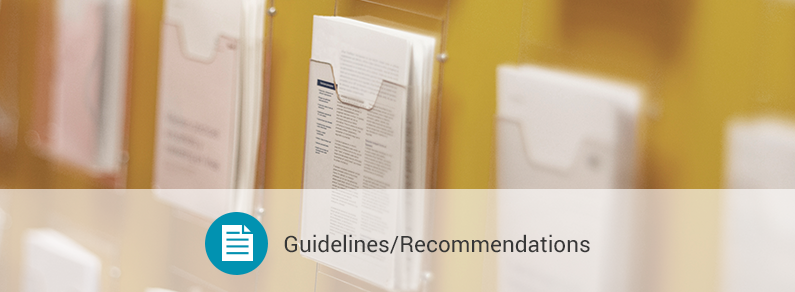
This quick guide for clinicians may be used to develop a safety plan – a prioritized written list of coping strategies and sources of support to be used by patients who have been assessed to be at high risk for suicide. The authors strongly recommend that the guide be used after reviewing the Safety plan […] See more...
-
Suicide Alertness for Everyone (safeTALK)
SafeTALK is a half-day training program that teaches participants to recognize and engage persons who might be having thoughts of suicide and to connect them with community resources trained in suicide intervention. SafeTALK stresses safety while challenging taboos that inhibit open talk about suicide. The program recommends that an ASIST-trained resource or other community support resource […] See more...
-
United States Air Force Suicide Prevention Program
This population-oriented effort involving 11 educational, clinical, and policy components was associated with a decrease in Air Force suicide deaths. See more...
